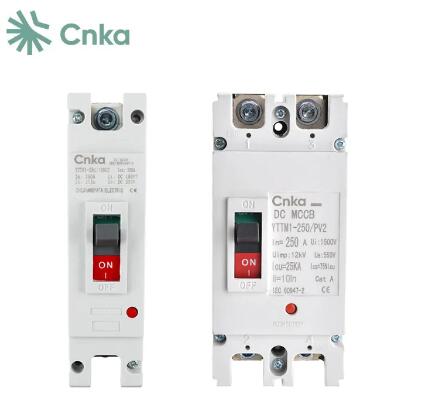How to Choose the Right Molded Case Circuit Breaker for Your DC System
2024-08-07
Introduction
Choosing the correct Molded Case Circuit Breaker (MCCB) for your Direct Current (DC) system can be challenging, given the variety of options and technical specifications available. In this blog, we will guide you through the key considerations and features to look for when selecting a DC MCCB to ensure optimal performance and protection for your electrical system.
1. Determine Your System’s Voltage and Current Ratings
The first step in choosing a DC MCCB is to identify the voltage and current ratings of your system. MCCBs are designed to handle specific voltage and current levels, so it’s crucial to select a breaker that matches or exceeds your system’s requirements. Ensure the MCCB’s voltage rating is compatible with your DC system’s operating voltage and that its current rating matches the expected load.
2. Understand the Interrupting Capacity
The interrupting capacity of an MCCB refers to its ability to safely interrupt fault currents without damage. For DC systems, this is particularly important due to the challenges associated with breaking DC circuits. Look for MCCBs with a high interrupting capacity to handle potential fault currents effectively.
3. Evaluate Arc Quenching Technology
DC MCCBs require specialized arc quenching mechanisms to extinguish the electrical arc that forms when a circuit is interrupted. Different MCCBs use various technologies, such as magnetic blowout or air chute systems, to manage and extinguish arcs. Choose an MCCB with proven arc quenching technology suitable for your application.
4. Consider Thermal and Magnetic Protection
MCCBs typically offer thermal protection against overloads and magnetic protection against short circuits. Ensure the MCCB you select provides appropriate thermal and magnetic settings for your DC system to ensure comprehensive protection against different types of electrical faults.
5. Check for Environmental and Mechanical Specifications
Depending on your application, your DC MCCB might need to withstand specific environmental conditions, such as extreme temperatures, humidity, or dust. Verify the MCCB’s environmental ratings and mechanical durability to ensure it will perform reliably in your operating environment.
6. Assess Compliance with Standards
Ensure that the DC MCCB you choose complies with relevant industry standards and certifications. Compliance with standards ensures that the breaker meets safety and performance criteria, providing you with added confidence in its reliability.
7. Consult with Experts
When in doubt, consult with electrical professionals or manufacturers to help you select the right MCCB for your DC system. They can provide valuable insights and recommendations based on your specific requirements and application.
Conclusion
Selecting the right Molded Case Circuit Breaker (MCCB) for your DC system is essential for ensuring safety and reliability. By considering factors such as voltage and current ratings, interrupting capacity, arc quenching technology, and environmental specifications, you can make an informed decision and choose an MCCB that meets your needs effectively.



